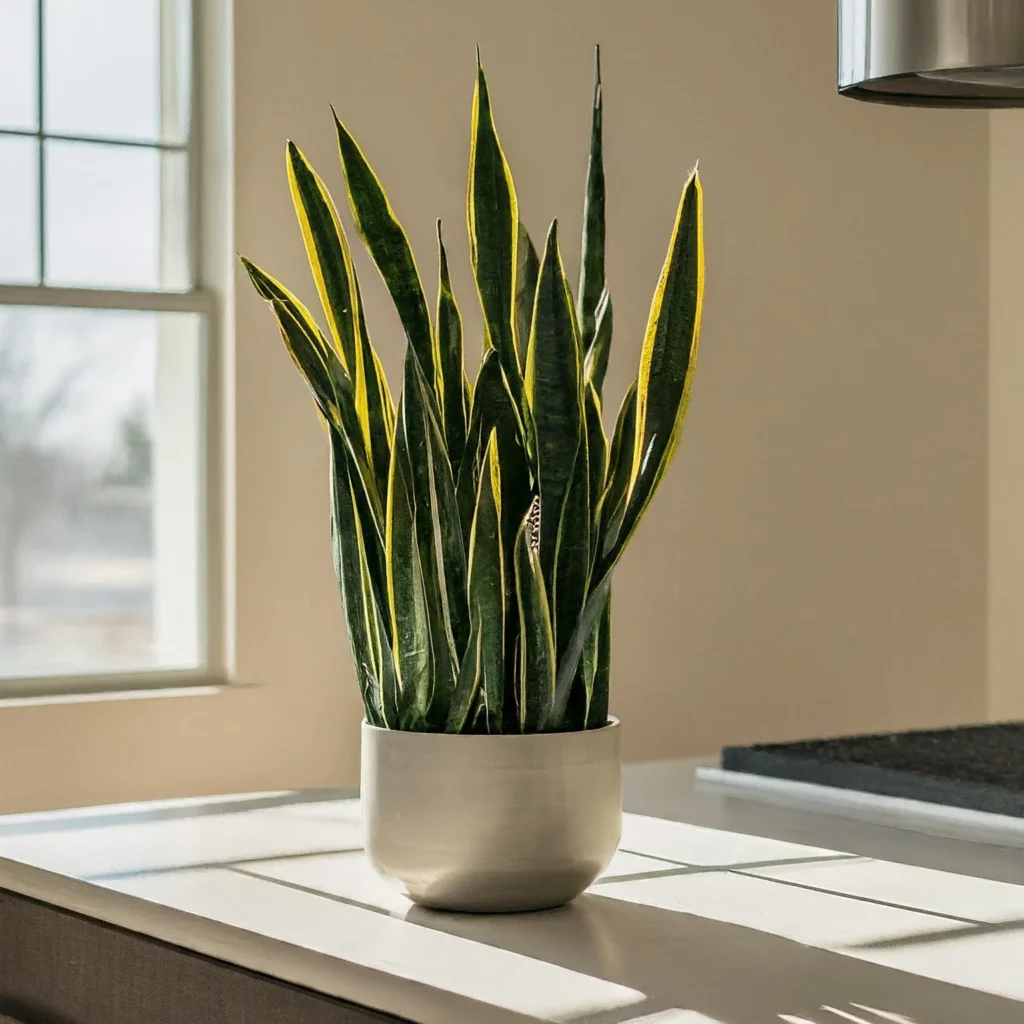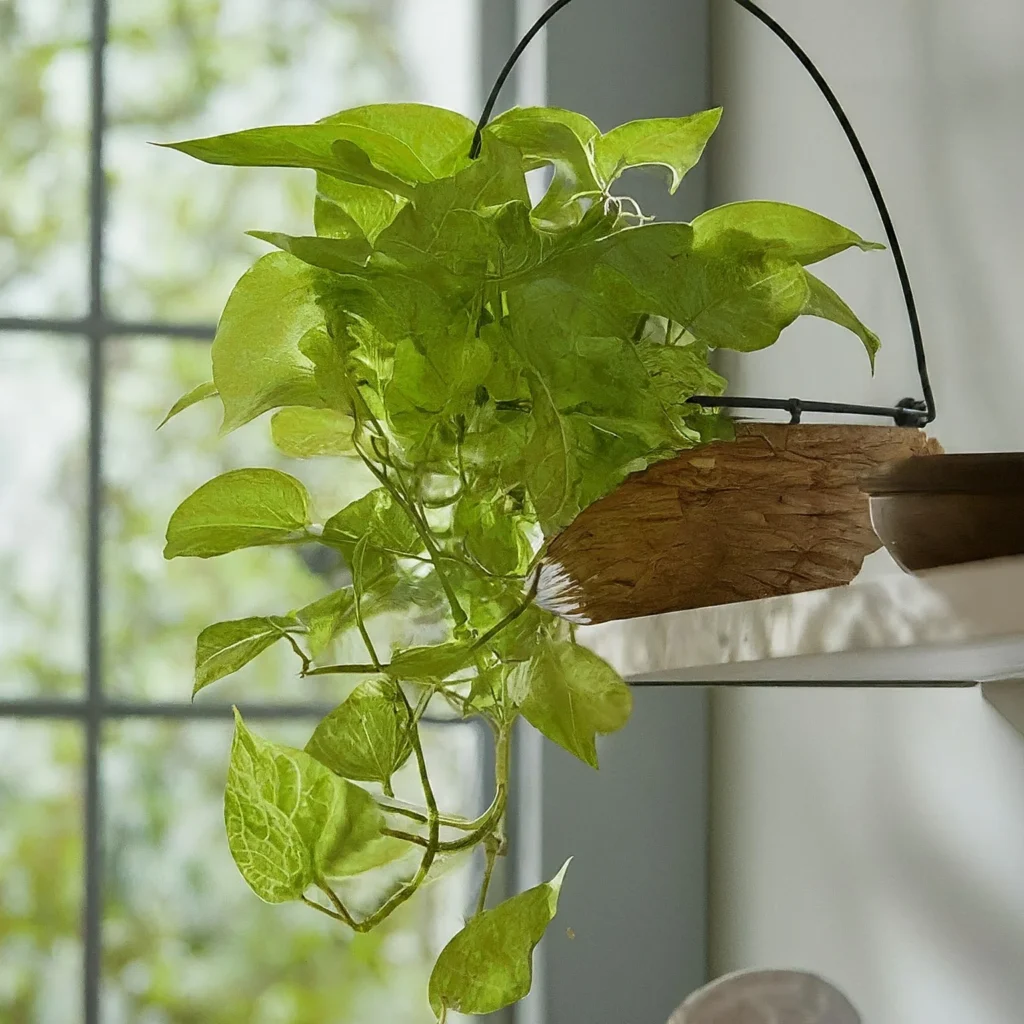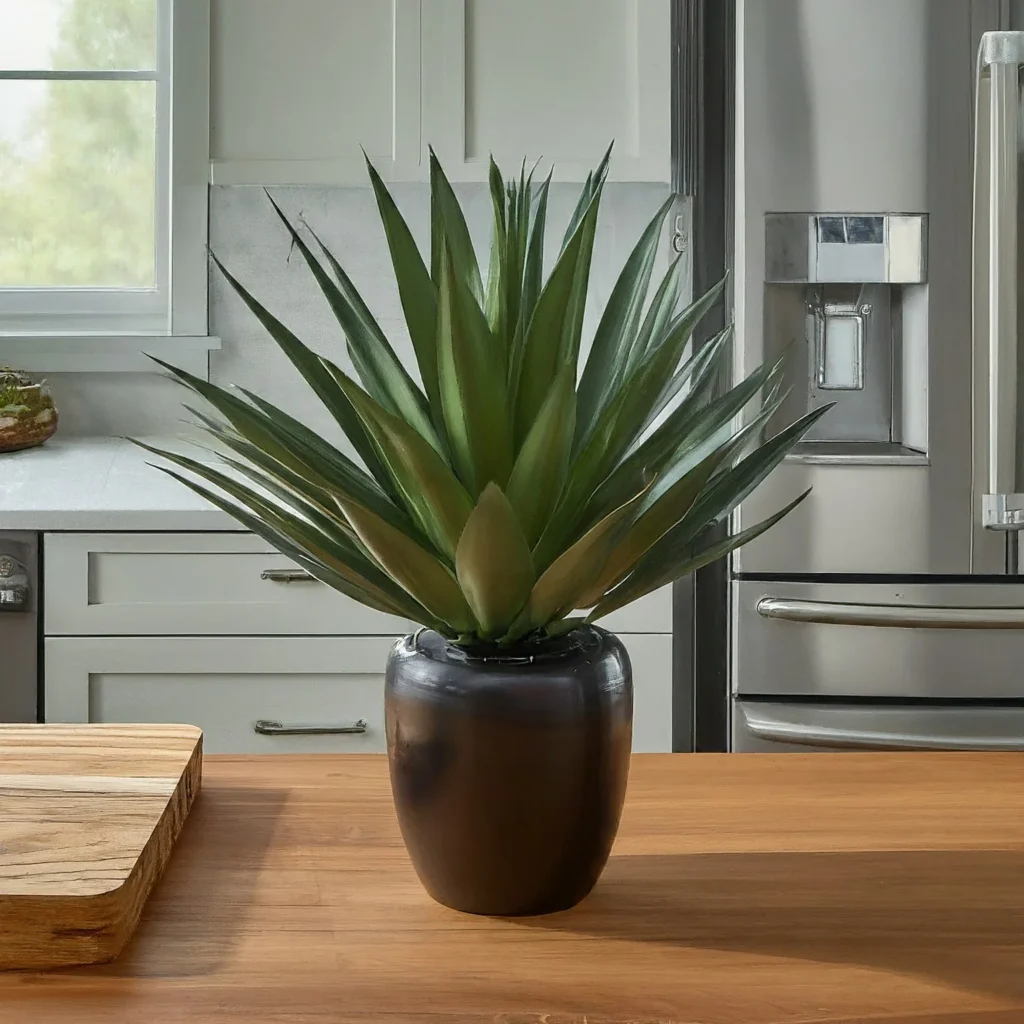Are you tired of your kitchen feeling more like a dungeon than a cozy culinary haven? Perhaps the lack of sunlight makes it seem impossible to keep any greenery alive.
But here’s the good news—you can have thriving kitchen plants that don’t need sunlight.
Yes, you read that right!
Some plants are perfectly happy with low light, making them ideal for brightening up even the darkest of kitchens.
Why Choose Kitchen Plants That Don’t Need Sunlight?
When you think of plants, you probably picture them basking in the sunlight. While many plants do thrive in bright conditions, there’s a whole world of greenery that prefers the shade.
These kitchen plants are not only perfect for areas with limited natural light, but they also bring life, color, and even some fresh air into your kitchen.
Benefits of Low-Light Kitchen Plants
- Air Purification: Many low-light plants are excellent at filtering out toxins, improving the air quality in your kitchen.
- Stress Reduction: There’s something incredibly calming about having greenery around, especially when you’re cooking or spending time in the kitchen.
- Aesthetic Appeal: Indoor kitchen plants can transform your kitchen into a lush, inviting space, even if it doesn’t get much sunlight.
What Plants Can Live Without Sunlight?
The key to finding indoor kitchen plants that don’t need sunlight is to look for species that naturally thrive in low-light environments.
Below are some of the best kitchen plants for those shadowy corners of your home.
1. Snake Plant (Sansevieria)

The snake plant, or Sansevieria, is a powerhouse when it comes to low-light environments. Its striking, upright leaves can reach heights of up to four feet, creating a bold visual statement in your kitchen.
These leaves are usually dark green with lighter green or yellow stripes, depending on the variety.
- Light Requirements: Snake plants are extremely versatile and can thrive in low to moderate light. They can tolerate indirect light or even artificial light if your kitchen doesn’t have a window.
- Watering Needs: Overwatering is the most common mistake with snake plants. They store water in their thick leaves, so they only need watering once every two to six weeks, depending on the humidity and temperature of your kitchen.
- Soil and Potting: Use a well-draining potting mix, preferably one formulated for cacti or succulents.
- Growth and Maintenance: Snake plants are slow growers, so they won’t take over your space. They rarely need repotting and can even tolerate being root-bound. Occasionally dust the leaves to keep them clean and shiny.
2. Neon Pothos (Epipremnum aureum neon)

Neon pothos is a favorite among both beginner and experienced gardeners.
This vining plant can adapt to almost any environment, making it one of the best kitchen plants for low-light areas. It is also known for its heart-shaped leaves that can range from bright green to variegated shades of white, yellow, or pale green.
- Light Requirements: Pothos thrives in low to moderate indirect light. It’s one of those rare plants that can still look good even in dim corners. However, if you want the variegated varieties to maintain their color, a bit more light will help.
- Watering Needs: Pothos is forgiving when it comes to watering. Allow the soil to dry out between waterings, but avoid letting it stay dry for too long.
- Soil and Potting: A general-purpose potting mix works well for pothos. Ensure the pot has drainage holes, and you might consider adding some perlite to improve aeration.
- Growth and Maintenance: Pothos is a fast grower, and its vines can quickly cascade down from a hanging basket or trail across a shelf. Regular pruning will keep the plant bushy and prevent it from becoming too leggy. You can easily propagate pothos by cutting a section of the vine and placing it in water until roots develop.
3. ZZ Plant (Zamioculcas zamiifolia)

The ZZ plant is as tough as they come, making it an excellent choice for those who want a plant that requires minimal care. With its glossy, dark green leaves, the ZZ plant brings a touch of sophistication to any kitchen.
- Light Requirements: The ZZ plant can survive in extremely low-light conditions, including spaces with just artificial light. However, it will grow more slowly in such environments. It can tolerate indirect light as well, but avoid direct sunlight, which can scorch its leaves.
- Watering Needs: ZZ plants are drought-tolerant, storing water in their thick rhizomes. Water them sparingly—about once every two to three weeks—letting the soil dry out completely between waterings. Overwatering is the most common way to harm a ZZ plant, so be cautious.
- Soil and Potting: Use a well-draining potting mix, similar to what you would use for succulents. Ensure your pot has drainage holes, and consider using a potting mix that includes sand or perlite to improve drainage.
- Growth and Maintenance: ZZ plants are slow growers, which makes them perfect for kitchens with limited space. They rarely need repotting and require little more than occasional dusting of their leaves. If you want to propagate a ZZ plant, you can do so by dividing the rhizomes or taking leaf cuttings, though it requires patience as growth is slow.
4. Cast Iron Plant (Aspidistra elatior)

True to its name, the cast iron plant is virtually indestructible. Its broad, dark green leaves can add a touch of elegance to your kitchen, and it’s incredibly forgiving when it comes to care.
- Light Requirements: The cast iron plant can survive in very low light, making it ideal for kitchens with little to no natural light. It can also tolerate fluorescent lighting, so it’s perfect for kitchens with only artificial light sources.
- Watering Needs: This plant prefers to be on the drier side. Water it sparingly, allowing the top inch of soil to dry out between waterings. It’s more tolerant of neglect than overwatering.
- Soil and Potting: This plant thrives in a well-draining potting mix. A standard houseplant mix works well, but you can add some sand or perlite to improve drainage.
- Growth and Maintenance: The cast iron plant is slow-growing and can live for many years with minimal care. It doesn’t need frequent repotting, and its leaves should be wiped down occasionally to remove dust. This plant rarely flowers indoors, but when it does, it produces small, inconspicuous blooms near the base.
5. Spider Plant (Chlorophytum comosum)

Spider plants take the top spot in the list of the best houseplants, and for good reason.
Their arching leaves, often variegated with white or light green stripes, make them a visually appealing addition to any kitchen.
They’re also incredibly easy to care for and can thrive in a variety of conditions.
- Light Requirements: Spider plants do well in low to medium indirect light. They can tolerate low light, but their growth will slow down. If your kitchen has some indirect sunlight, that’s ideal, but they’ll still survive in low-light conditions.
- Watering Needs: Spider plants like to stay evenly moist, but they can tolerate drying out occasionally. Water them when the top inch of soil feels dry, and make sure not to let them sit in water, as their roots can rot.
- Soil and Potting: A general-purpose potting mix works well for spider plants. Ensure the pot has good drainage, as spider plants don’t like to sit in soggy soil.
- Growth and Maintenance: Spider plants are fast growers and often produce “babies” or offshoots that dangle from the mother plant. These can be cut off and propagated easily. Regular pruning helps maintain their shape, and they benefit from occasional feeding during the growing season with a balanced fertilizer.
6. Peace Lily (Spathiphyllum)

Peace lilies are not only beautiful but also one of the best kitchen plants for low-light conditions. Their dark green leaves and elegant white flowers can add a touch of tranquility to your kitchen space.
- Light Requirements: Peace lilies prefer low to moderate indirect light. They can adapt to low-light environments but will produce more flowers in slightly brighter conditions. However, be sure to not place them in direct sunlight, as it can scorch the leaves.
- Watering Needs: Peace lilies like to be kept consistently moist but not soggy. Water them when the top inch of soil feels dry, and mist their leaves occasionally to maintain humidity, especially in dry indoor environments. These plants will droop noticeably when they need water but will usually perk up once watered.
- Soil and Potting: A well-draining potting mix is essential for peace lilies. They don’t like to sit in water, so a pot with drainage holes is a must. Adding some peat moss to the soil can help maintain the moisture levels they prefer.
- Growth and Maintenance: Peace lilies are relatively low-maintenance but appreciate regular cleaning of their leaves to remove dust. They’re known for their air-purifying qualities, making them a healthy choice for the kitchen. Fertilize them every 6-8 weeks during the growing season to encourage blooming.
Creative Indoor Kitchen Plants Ideas
Now that you know which plants are best suited for low-light kitchens, let’s explore some indoor kitchen plants ideas to maximize their impact.
1. Hanging Baskets
If counter space is limited, consider using hanging baskets.
Pothos and spider plants are perfect candidates for this setup, allowing their vines to cascade down, creating a beautiful green curtain.
2. Wall-Mounted Planters
For a modern touch, try wall-mounted planters.
These are great for kitchen plants that don’t need sunlight like snake plants or ZZ plants. They save space and add a vertical element to your kitchen décor.
3. Window Ledges and Sills
Even if your kitchen window doesn’t get much light, it can still be a prime spot for low-light plants.
Place your peace lilies or cast iron plants on the sill to add some greenery without sacrificing valuable counter space.
4. Corner Greenery
Utilize the often-overlooked corners of your kitchen by placing a ZZ plant or a snake plant in a stylish pot. These plants are low-maintenance and can thrive in the shadows.
5. Under-Cabinet Plants
If your kitchen cabinets have a little space underneath, consider placing some small pots of low-light plants like pothos or spider plants. It’s an unexpected and delightful way to incorporate greenery.
What Indoor Plants Require No Sunlight?
You might wonder, what indoor plants require no sunlight at all, you ask?”
While all plants need some light to survive, the plants we’ve discussed are as close as it gets to thriving with minimal light. However, if your kitchen is pitch black, you might want to consider using artificial light to help them out.
Using Artificial Light
If your kitchen lacks windows or gets no natural light, using a grow light can make all the difference.
LED grow lights are energy-efficient and can provide the spectrum of light that plants need to photosynthesize.
Position the light above or beside your indoor kitchen plants to mimic sunlight, and you’ll see them flourish.
Common Problems and Solutions for Low-Light Kitchen Plants
Even though these plants are low-light lovers, they can still face some challenges. Here’s how to troubleshoot common issues.
1. Yellowing Leaves
If your plant’s leaves are turning yellow, it’s likely overwatered.
Make sure the soil is drying out between waterings, especially for plants like the snake plant or ZZ plant.
2. Leggy Growth
Leggy growth—where the plant becomes long and spindly—is often a sign that it’s reaching for more light. If you notice this, try moving the plant to a slightly brighter spot or use a grow light.
3. Drooping Leaves
If you see drooping leaves, it might be an indication of either overwatering or underwatering. It is a good idea to assess the soil moisture and tweak your watering schedule accordingly.
Final Thoughts on Kitchen Plants That Don’t Need Sunlight
Bringing plants into your kitchen doesn’t have to be a battle against the lack of sunlight.
With the right choices, you can enjoy the beauty and benefits of kitchen plants that don’t need sunlight.
Whether you’re drawn to the sleek look of a ZZ plant or the trailing vines of a pothos, there’s a plant out there that’s perfect for your kitchen.
So, go ahead and transform your kitchen into the green oasis you’ve always dreamed of.
Remember, even if your kitchen feels like a cave, these hardy plants will thrive, bringing a touch of nature to your culinary space.
Now it’s your turn! Which of these indoor kitchen plants will you try first?

